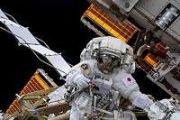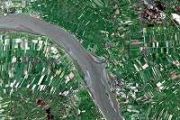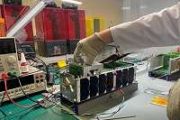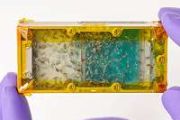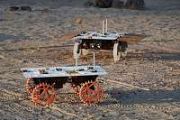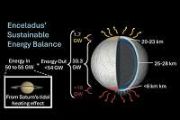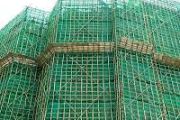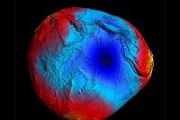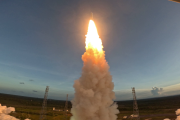
Copernical Team
Expedition to highest active volcano unearths clues about life on other worlds
 A harsh sun shines down through a cloudless sky, across a vast and unforgiving landscape. It's covered in gray rock, giant ice sculptures and expansive fields of spiky, yellow and orange bushes. In the distance, intimidating mountain peaks dominate the desolate scene, many miles from the nearest town. Yet alpacas roam freely and flamingos seek out scarce water, both unexpected sights in this wil
A harsh sun shines down through a cloudless sky, across a vast and unforgiving landscape. It's covered in gray rock, giant ice sculptures and expansive fields of spiky, yellow and orange bushes. In the distance, intimidating mountain peaks dominate the desolate scene, many miles from the nearest town. Yet alpacas roam freely and flamingos seek out scarce water, both unexpected sights in this wil MDA to provide satellite imagery for international efforts in UKRAINE
 MDA Ltd. issued the following statement regarding the ongoing situation in Ukraine: "As organizations around the globe come together in a spirit of cooperation and collaboration to support efforts to restore peace, MDA has secured special authorization from the Government of Canada to collect Synthetic Aperture Radar (SAR) satellite imagery over restricted areas in Ukraine.
Images captured
MDA Ltd. issued the following statement regarding the ongoing situation in Ukraine: "As organizations around the globe come together in a spirit of cooperation and collaboration to support efforts to restore peace, MDA has secured special authorization from the Government of Canada to collect Synthetic Aperture Radar (SAR) satellite imagery over restricted areas in Ukraine.
Images captured Saudi, Lockheed Martin in missile defence deal
 Saudi Arabia announced a deal Monday with US firm Lockheed Martin to manufacture elements of the missile defences of the Gulf state, the target of frequent cross-border attacks by rebels in Yemen.
Its military industries authority, cited by state news agency SPA, approved two projects to produce launchers and other equipment used in the THAAD anti-missile defence system.
The announcement
Saudi Arabia announced a deal Monday with US firm Lockheed Martin to manufacture elements of the missile defences of the Gulf state, the target of frequent cross-border attacks by rebels in Yemen.
Its military industries authority, cited by state news agency SPA, approved two projects to produce launchers and other equipment used in the THAAD anti-missile defence system.
The announcement Satellogic and Astraea enable direct collection access for emergency response in Ukraine
 Satellogic Inc. (NASDAQ:SATL), a leader in sub-meter resolution satellite imagery collection, announced a collaboration with Astraea, a geospatial and AI analysis software company, to distribute critical Earth Observation ("EO") data directly to the Ukrainian government, allied governments, and humanitarian organizations on the ground.
Satellogic is providing its Daily Collection Access se
Satellogic Inc. (NASDAQ:SATL), a leader in sub-meter resolution satellite imagery collection, announced a collaboration with Astraea, a geospatial and AI analysis software company, to distribute critical Earth Observation ("EO") data directly to the Ukrainian government, allied governments, and humanitarian organizations on the ground.
Satellogic is providing its Daily Collection Access se Motiv Space Systems and Blue Origin announce ModuLink
 Motiv Space Systems reports it has been awarded a contract under the Defense Innovation Unit's (DIU's) Modularity for Space Systems Program (M4SS) together with sub-contractor Blue Origin. The contract leverages Motiv's advanced space robotics technology to enable a new age of space utilization in which deployed spacecraft can be repaired, augmented, or modified to make them more resilient and m
Motiv Space Systems reports it has been awarded a contract under the Defense Innovation Unit's (DIU's) Modularity for Space Systems Program (M4SS) together with sub-contractor Blue Origin. The contract leverages Motiv's advanced space robotics technology to enable a new age of space utilization in which deployed spacecraft can be repaired, augmented, or modified to make them more resilient and m Fleet Space Technologies teams up with Seven Sisters Consortium
 Fleet Space Technologies is standing with some of Australia and the world's leading space and non-space organisations in a bid to further exploration of the Moon, Mars and the Earth.
The Seven Sisters is an initiative to discover abundant resources for humanity's exploration of space through the implementation of world-leading surface exploration and construction technologies developed wit
Fleet Space Technologies is standing with some of Australia and the world's leading space and non-space organisations in a bid to further exploration of the Moon, Mars and the Earth.
The Seven Sisters is an initiative to discover abundant resources for humanity's exploration of space through the implementation of world-leading surface exploration and construction technologies developed wit New research discovers link between disparate approaches to quantum gravity
 A new study by researchers from the International Centre for Theoretical Sciences (ICTS) and the Perimeter Institute for Theoretical Physics (PI) discovers a unifying thread in two approaches to quantum gravity that were previously believed to be separate.
Finding a theory of quantum gravity - which would combine both quantum mechanical and gravitational effects - is one of the great unsol
A new study by researchers from the International Centre for Theoretical Sciences (ICTS) and the Perimeter Institute for Theoretical Physics (PI) discovers a unifying thread in two approaches to quantum gravity that were previously believed to be separate.
Finding a theory of quantum gravity - which would combine both quantum mechanical and gravitational effects - is one of the great unsol Researchers unravel inner workings of galaxy clusters with 196 lasers
 Galaxies rarely live alone. Instead, dozens to thousands are drawn together by gravity, forming vast clusters that are the largest objects in the universe.
"Galaxy clusters are one of the most awe-inspiring things in the universe," said Prof. Emeritus Don Lamb, a University of Chicago astrophysicist and co-author on a new paper published March 9-one that may point the way towards solving a
Galaxies rarely live alone. Instead, dozens to thousands are drawn together by gravity, forming vast clusters that are the largest objects in the universe.
"Galaxy clusters are one of the most awe-inspiring things in the universe," said Prof. Emeritus Don Lamb, a University of Chicago astrophysicist and co-author on a new paper published March 9-one that may point the way towards solving a Mathematical discovery could shed light on secrets of the Universe
 How can Einstein's theory of gravity be unified with quantum mechanics? It is a challenge that could give us deep insights into phenomena such as black holes and the birth of the universe. Now, a new article in Nature Communications, written by researchers from Chalmers University of Technology, Sweden, and MIT, USA, presents results that cast new light on important challenges in understanding q
How can Einstein's theory of gravity be unified with quantum mechanics? It is a challenge that could give us deep insights into phenomena such as black holes and the birth of the universe. Now, a new article in Nature Communications, written by researchers from Chalmers University of Technology, Sweden, and MIT, USA, presents results that cast new light on important challenges in understanding q Massive bubbles at center of Milky Way caused by supermassive black hole
 In 2020, the X-ray telescope eRosita took images of two enormous bubbles extending far above and below the center of our galaxy. Since then, astronomers have debated their origin. Now, a study including University of Michigan research suggests the bubbles are a result of a powerful jet of activity from the supermassive black hole at the center of the Milky Way. The study, published in Nature Ast
In 2020, the X-ray telescope eRosita took images of two enormous bubbles extending far above and below the center of our galaxy. Since then, astronomers have debated their origin. Now, a study including University of Michigan research suggests the bubbles are a result of a powerful jet of activity from the supermassive black hole at the center of the Milky Way. The study, published in Nature Ast 



